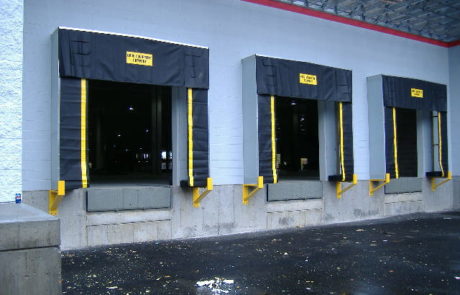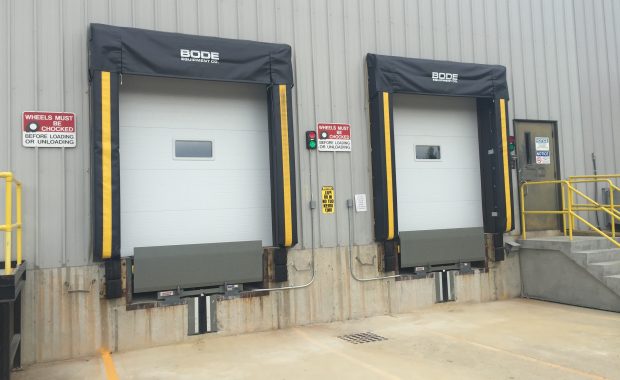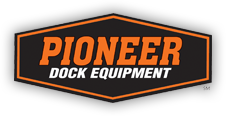About Dock Seals and Dock Shelters
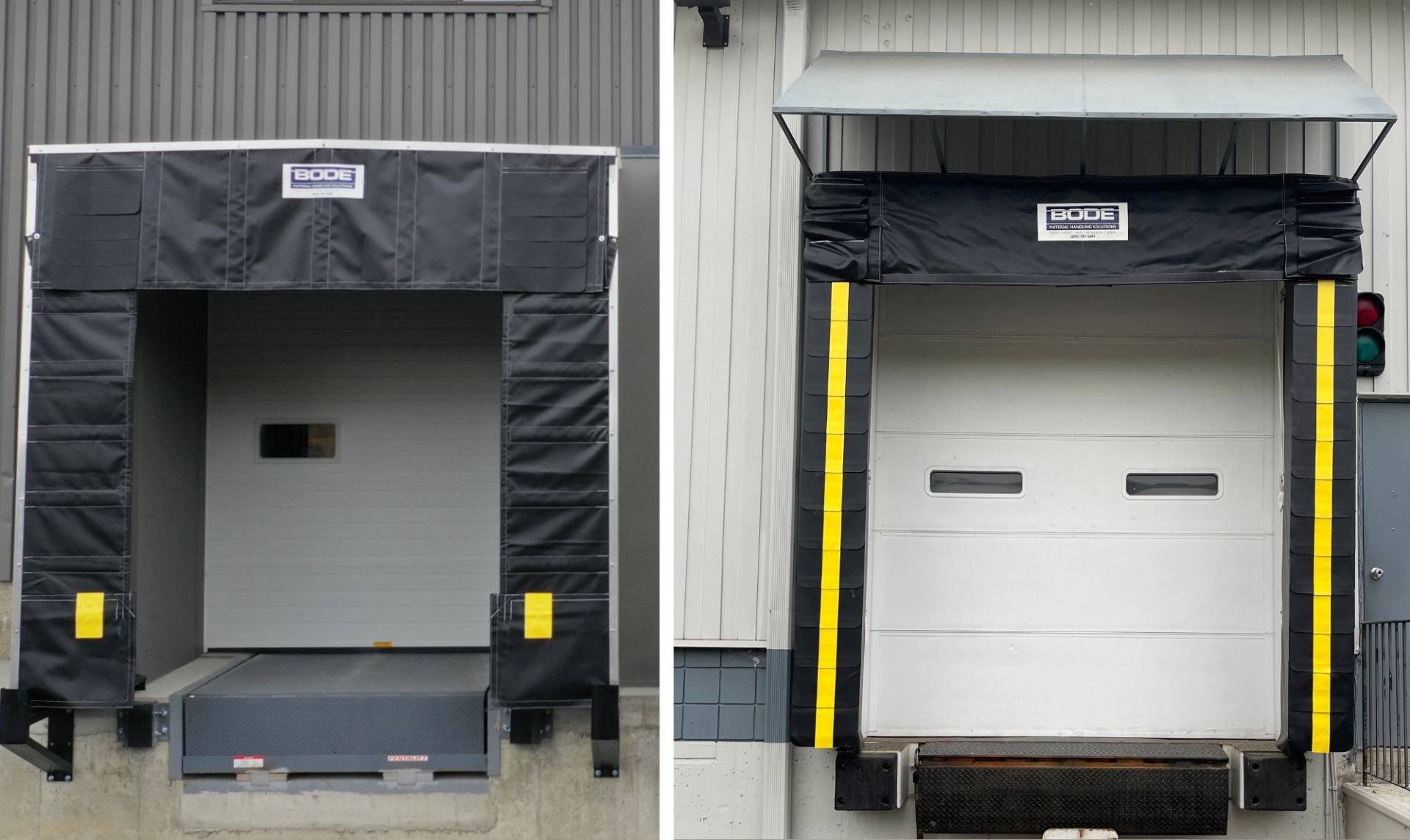
Dock seals and dock shelters protect the loading dock. By providing a seal when a truck or trailer is in place, these solutions reduce energy costs and offer protection from harsh weather conditions, such as snow, sleet, and rain.
While these solutions both offer similar benefits, it is important to understand their differences in effectiveness, price, versatility, and durability.
We recommend consulting one of our trained professionals on whether a dock seal or dock shelter is the right solution for your dock operation.
Dock Seals
A dock seal is a padded enclosure, made of heavy-duty fabric covering a foam core, that is installed around the exterior perimeter of a loading dock door opening. Its purpose is to create a tight, compression-based seal between the building and the rear of a truck trailer.
When the truck backs into the dock, it compresses the seal’s foam pads, effectively blocking external elements—such as air, dust, rain, and pests—from entering the facility, thereby helping to maintain consistent interior temperatures and improve energy efficiency.
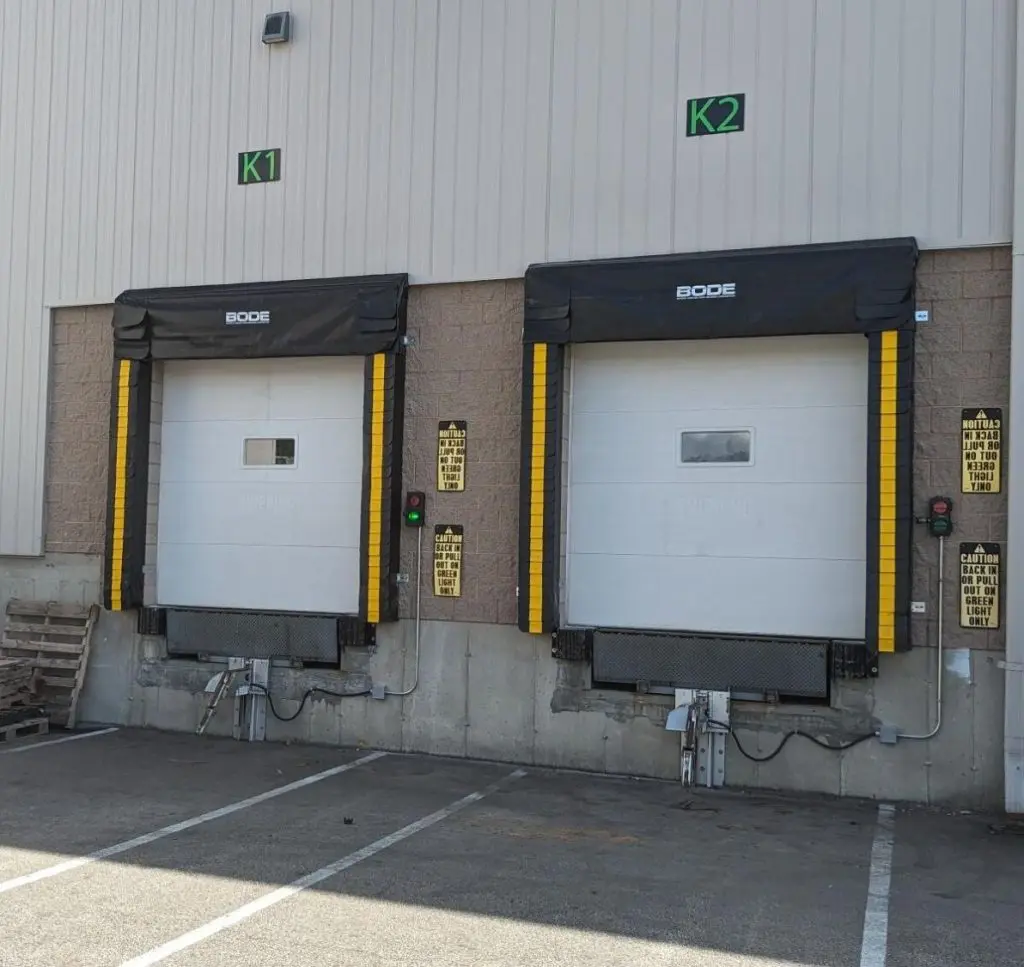
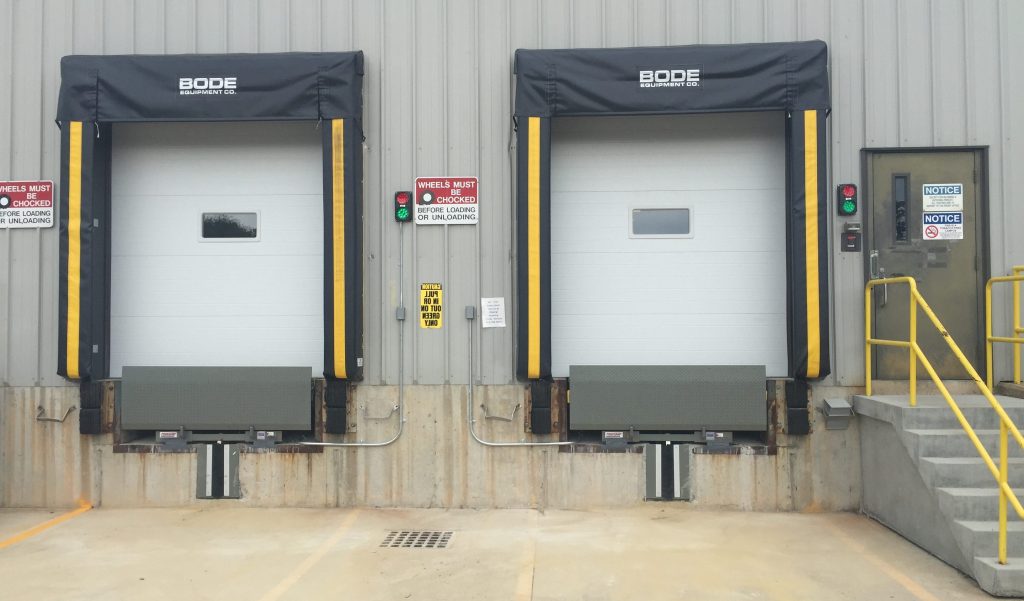
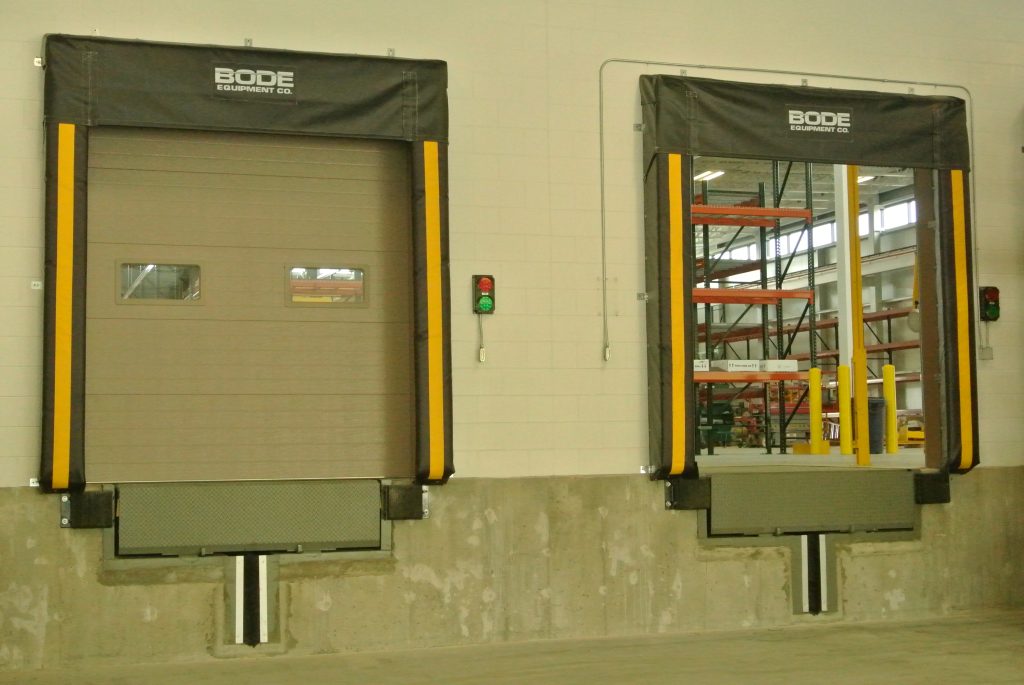
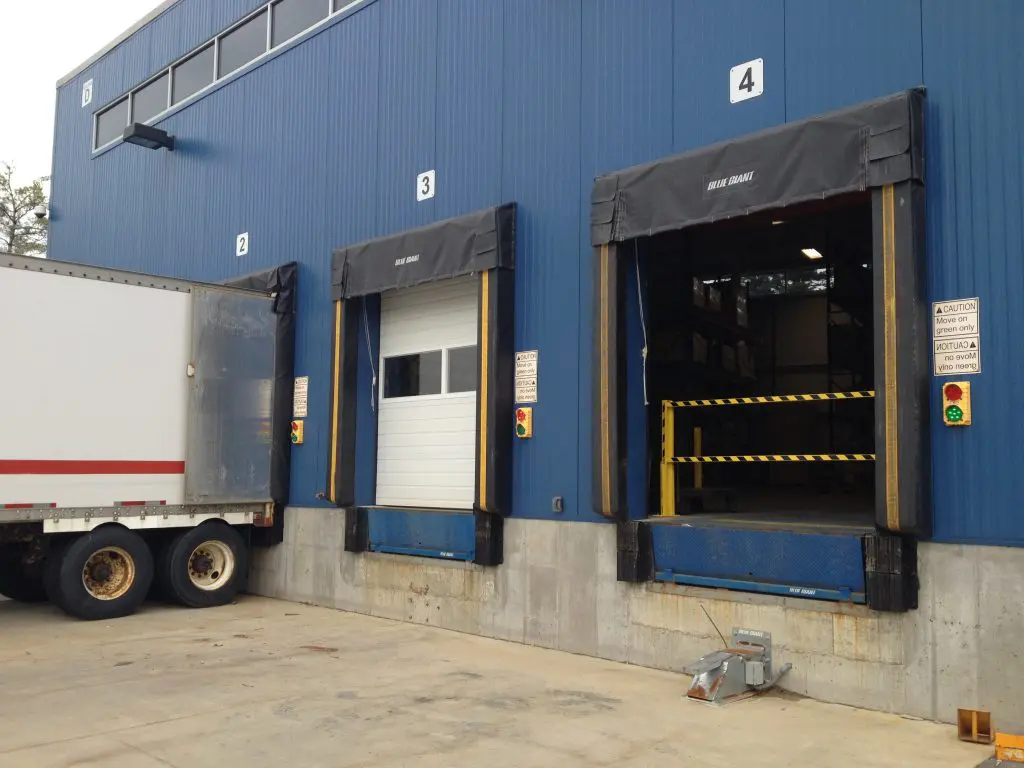
Dock Shelters
A dock shelter is a protective enclosure, typically constructed with a rigid or flexible frame and durable fabric curtains, installed around the exterior perimeter of a loading dock door.
Unlike a dock seal, a shelter is designed to project outward, allowing a truck or trailer to back into its envelope. The curtains then flex or wrap around the sides and top of the trailer, creating a seal that protects the opening from weather, contaminants, and energy loss, while also accommodating a wider variety of truck sizes and providing full, unrestricted access to the trailer’s interior.
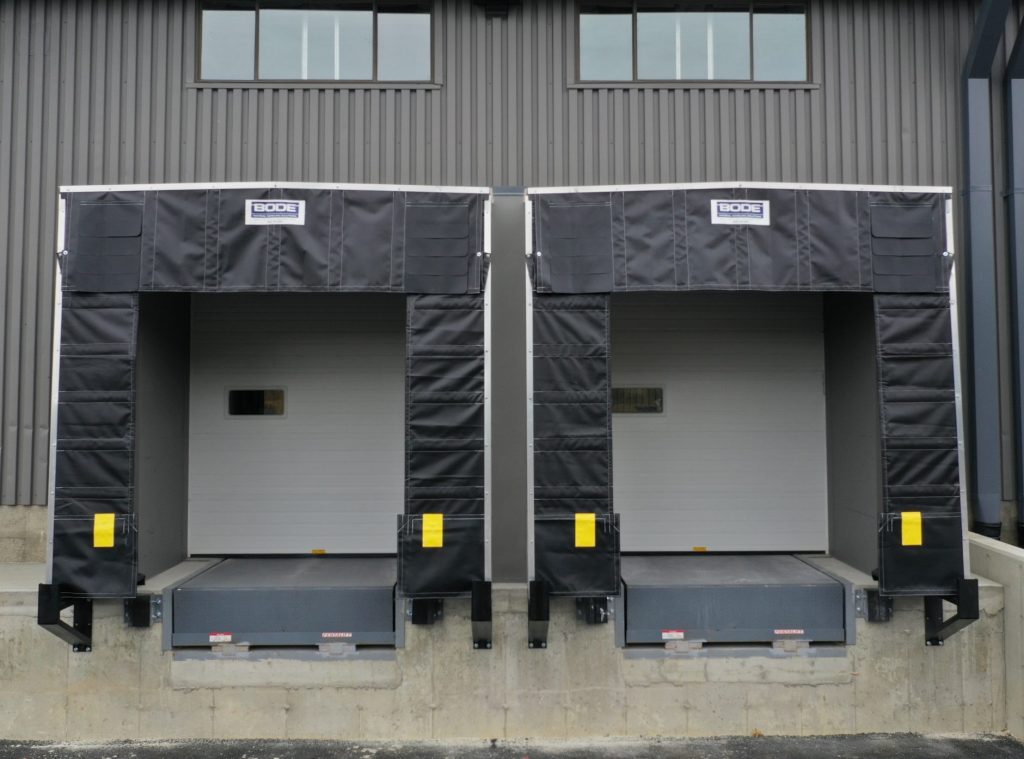
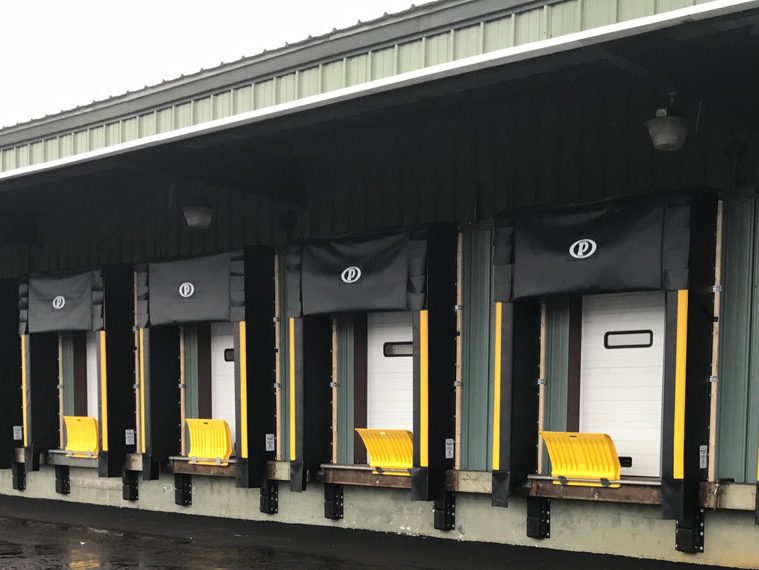
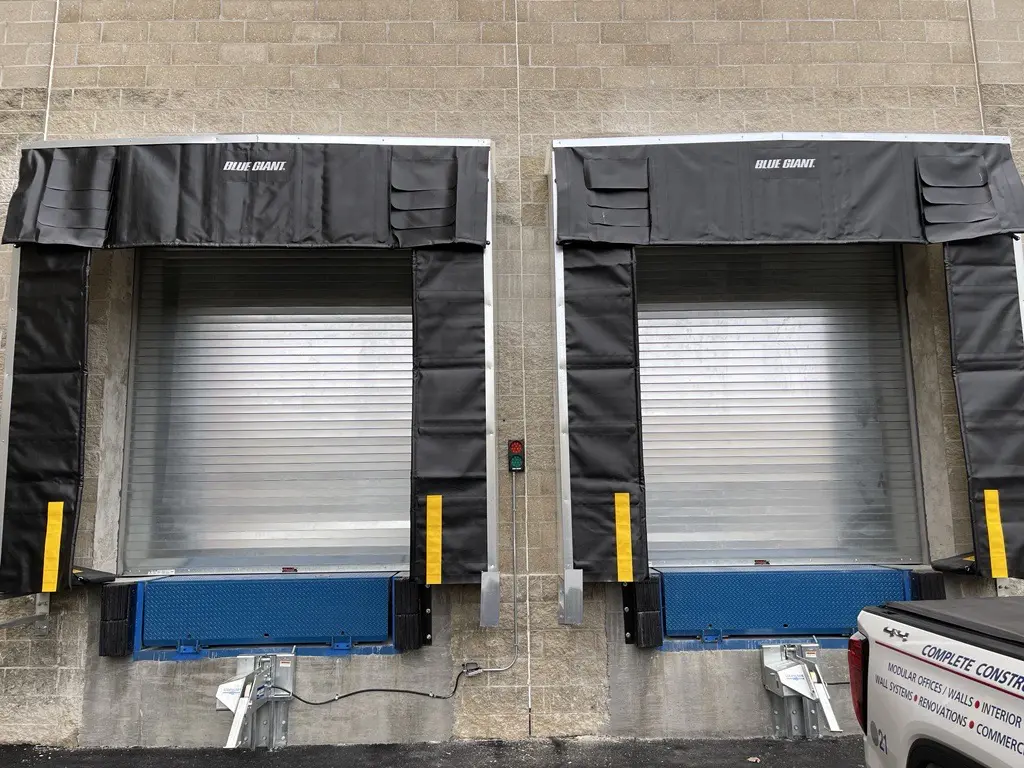
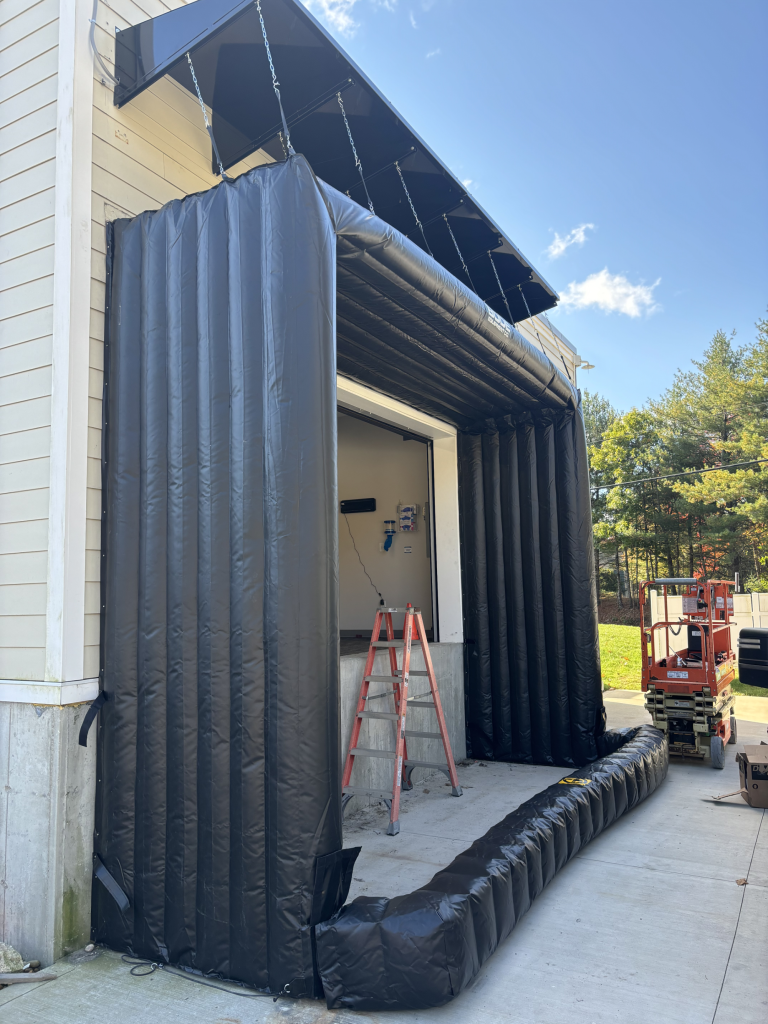
Dock Seal and Dock Shelter Solutions
Dock Shelters
Dock Seals
Benefits
Energy Efficiency and Climate Control
Both seals and shelters create a barrier between the conditioned air inside your facility and the exterior environment.
By minimizing air exchange through the dock opening, they significantly reduce energy loss from heating and cooling, lowering utility bills and maintaining desired interior temperatures. This is especially critical for temperature-sensitive goods!
Safety and Employee Comfort
By sealing the gap, both seals and shelters keep out rain, snow, and strong winds, which prevent wet, slippery, and hazardous conditions on the loading dock floor.
They also create a more comfortable working environment for employees, protecting them from extreme temperatures and harsh weather around the dock area.
Protection from Contaminants and Pests
They act as a crucial physical barrier that prevents external contaminants (dust, debris, airborne pollutants) and pests (insects, birds, rodents) from entering the warehouse.
This is vital for maintaining product quality, facility cleanliness, and compliance with industry regulations (such as those in food processing or pharmaceutical environments).
Differences in Application
Dock Seals
- Your primary goal is maximum energy conservation, and you require an airtight seal (great for cold storage or food facilities).
- Your facility handles a consistent size and style of trailers.
- You have smaller door openings (usually trailer-sized openings).
- You need a lower initial investment for your dock operation.
Dock Shelters
- You handle a wide variety of truck and trailer sizes.
- You need unrestricted access to the full rear of the trailer for fast or oversized loading/unloading (forklift access).
- Your dock has high traffic volume, where durability is paramount.
- Your door opening is large or oversized.

